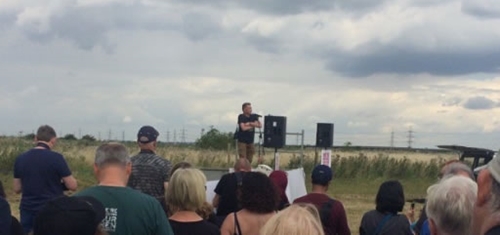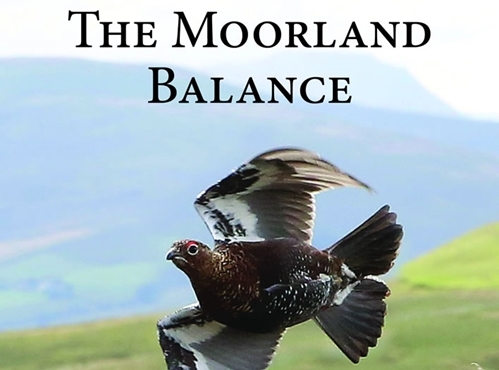By Andrew Gilruth, GWCT Communications Director
As Chris Packham climbed up on the Ifor Williams flatbed trailer the sky dramatically darkened. The stage, at the RSPB’s Rainham Marsh reserve in Essex, was set for another fire and brimstone Hen Harrier Day ‘address’.

This year the speech was more measured and pragmatic (the event is now in its fourth year). Perhaps the BBC has persuaded him to tone it down a bit? Either way, the sun slowly came back out.
2017 hen harrier numbers - in England
Chris, an RSPB Vice President, clarified that there are five pairs of breeding hen harriers in England this year. There should be more, but this is a remarkable achievement for a species that, a few years ago, was not breeding in England.
The speeches at these events are fascinating to me because many of those seeking to highlight the plight of hen harriers are those actively campaigning to prevent (and so now reverse) the government’s plan to recover harrier numbers.
The use of science and evidence?
Chris Packham stressed that his views are based on science and evidence. Few would disagree with some of the points made but the following stood out as a bit silly to me – they only serve to antagonise rather than find solutions:
Claim Our moorlands are drained for grouse.
Fact The government paid farmers in the 1960s and 70s to drain moors to improve the grazing for sheep and cattle. Natural England estimates that this has now been reversed on 18,000 hectares of grouse moorland.
Claim There is no ambiguity in the scientific evidence that heather burning is damaging.
Fact Across Europe scientists are promoting the reintroduction of burning – to protect and restore globally rare heathland and moorland. Best practice on burning is informed by this growing body of scientific literature, much of it emerging from the UK. The range of scientific views has been reported before here and here.
Claim The protection of ground-nesting birds, like curlew, from predators can’t be justified because it requires the removal of all predators.
Fact During our ten-year predation study, which achieved dramatic results, fox numbers were reduced by 43% and crows by 78%. Neither were completely removed.
Claim All mountain hares are removed on grouse moors.
Fact Mountain hares thrive on grouse moors. They do, however, decline locally where favourable habitat such as former grouse moors have been turned into forestry or the heather has been removed by excessive grazing.
Claim Grouse moors cause flooding.
Fact A recent Natural England report could not find any evidence for burning increasing flood risk.
Claim There is no ambiguity in the scientific evidence of burning on water quality.
Fact Results differ depending on the length of time since burning, and the scale at which studies are performed. The possible effect of burning on water quality and amount of run-off is also complicated by interactions with other upland management, such as woodland expansion and grazing. These interactions have been little studied. More studies are required
Claim Reintroducing hen harriers to the lowlands will not solve the problem.
Fact No one has suggested it will solve everything, but reintroductions are a recognised conservation technique to expand the range of threatened species (as successfully used by the RSPB on red kites). This is why reintroductions are an important element of the government’s six-point plan to recover harriers across England.
As I walked back to Purfleet station I reflect on the misinformation and wonder why so many, including the RSPB, let it go unchallenged? Perhaps the organisers might consider letting me speak one year? I asked BAWC. No response.
I tweeted a picture of the event. Someone responded with a picture from BBC Countryfile Live at Blenheim Palace – the gamekeeping stand had more visitors. The wider public appear more interested in engaging with keepers than some suggest.
If you would like to read more about the current science (and what is simply not yet known) on grouse shooting and moorland management, do follow this link to our new publication.

Buy our essential new book for just £8.95
Featuring a foreword by Sir Max Hastings, this handy paperback offers an insight into the science behind grouse shooting and moorland management.
Buy now >